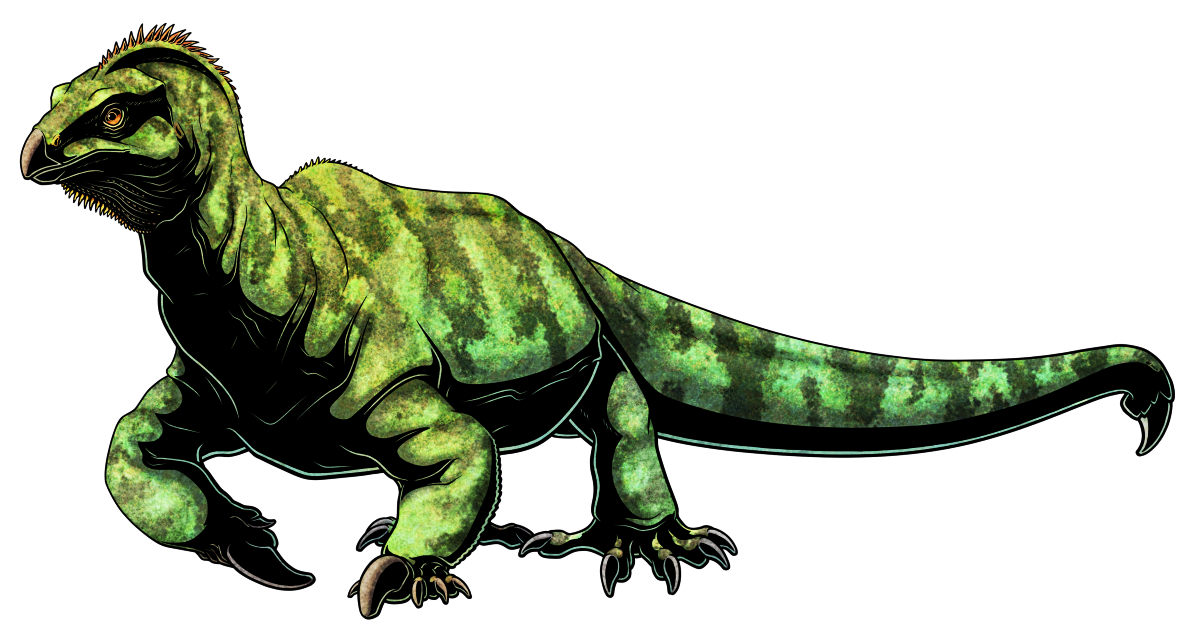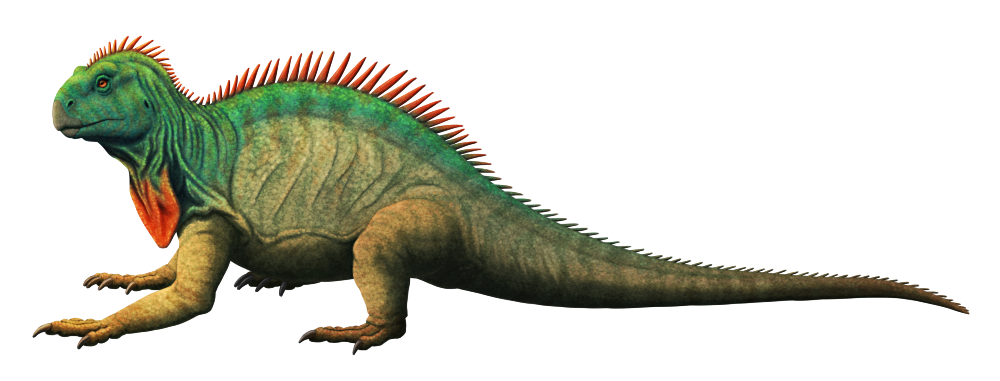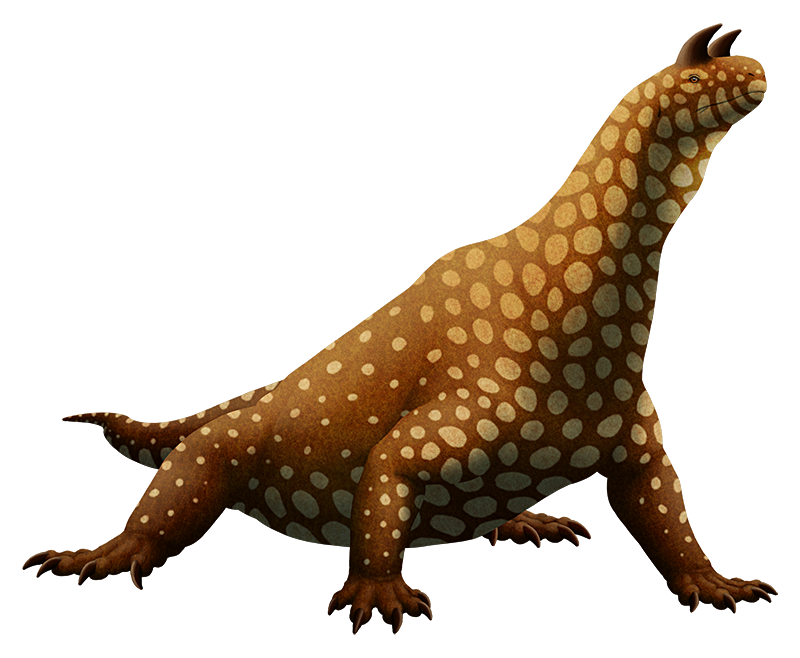Drepanosaurs were a weird little group of tree-climbing Triassic reptiles with prehensile claw-tipped tails, chameleon-like bodies, humped backs, grasping feet, long necks, and somewhat bird-like skulls that may have been tipped with toothless beaks in some species.
Recently some of them have been recognized as also having adaptations for digging and ripping into insect nests, similar to modern anteaters, with highly specialized forelimb bones and a massively enlarged hoked claw on each hand.
And now we have another one of these digging drepanosaurs: Unguinychus onyx, whose name delightfully translates to “claw claw claw”!
Living in what is now New Mexico, USA during the late Triassic, around 215-208 million years ago, Unguinychus is only known from its enlarged hand claws but was probably similar in size to some of its close relatives, likely around 40cm long (~1’4″).
Based on skin impressions from the early drepanosaur Kyrgyzsaurus it also would have been covered in small scales, possibly with a skin crest and a chameleon-like throat sac.
Drepanosaurs’ evolutionary relationships are rather unclear, with various studies classifying them as an early branch of diapsid reptiles, as close relatives of the gliding kuehneosaurids, or as protorosaurian archosauromorphs. But recently another idea has been proposed, instead placing them slightly further up the archosauromorph evolutionary tree in the allokotosaur lineage close to trilophosaurids – and notably making them very closely related to fellow Triassic bird-headed weirdo Teraterpeton.
Continue reading “Unguinychus”




